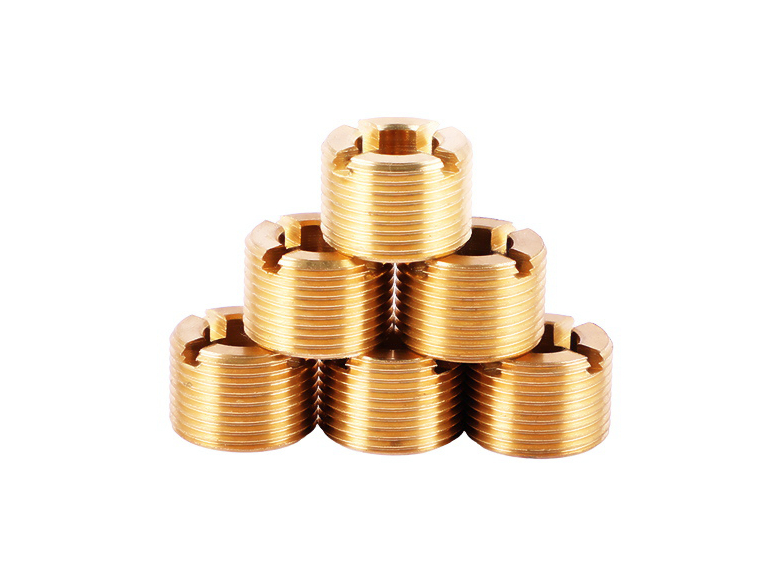Custom CNC Turning of Copper and Brass Parts for Electrical Connectors in Consumer Electronics
Introduction
In the fast-paced world of Consumer Electronics, the demand for efficient, reliable, and high-performance electrical connectors is growing rapidly. Copper and brass, renowned for excellent electrical conductivity, thermal efficiency, corrosion resistance, and ease of machining, are extensively utilized to manufacture precision connectors and terminals used in devices such as smartphones, computers, wearables, and audio-visual equipment.
CNC turning services are crucial in fabricating custom copper and brass connectors, providing tight dimensional tolerances, smooth finishes, and consistent quality. CNC turning ensures these components meet consumer electronics' stringent electrical performance and durability standards.
Copper and Brass Materials
Material Performance Comparison
Material | Electrical Conductivity (%IACS) | Tensile Strength (MPa) | Yield Strength (MPa) | Typical Applications | Advantage |
|---|---|---|---|---|---|
≥ 100 | 220-310 | 70-260 | High-precision connectors, terminals | Exceptional electrical conductivity, excellent machinability | |
≥ 90 | 360-450 | 300-380 | High-performance terminals, relay components | High strength, excellent machinability and conductivity | |
26-28 | 345-400 | 125-165 | Connector pins, electronic contacts | Superb machinability, good strength and corrosion resistance | |
24-26 | 380-420 | 130-170 | Complex connector housings, precision terminals | High strength, excellent forming properties |
Material Selection Strategy
The choice between copper and brass materials depends on specific electrical connector requirements:
Connectors demanding maximum electrical conductivity and thermal efficiency: Copper C110 (TU0) is optimal.
High-performance terminals needing both conductivity and mechanical durability: Tellurium Copper C151 is highly recommended.
Components requiring ease of machining and moderate conductivity: Brass C360 provides the ideal balance of machinability and strength.
Complex connector housings or fittings needing formability and strength: Brass C377 is preferable for intricate shapes and robust components.
CNC Turning Processes
Process Performance Comparison
CNC Turning Technology | Dimensional Accuracy (mm) | Surface Roughness (Ra μm) | Typical Applications | Key Advantages |
|---|---|---|---|---|
±0.005-0.015 | 0.4-0.8 | Micro-connectors, high-precision terminals | Tight dimensional control, exceptional finish | |
±0.005-0.02 | 0.6-1.2 | Complex connector assemblies, specialized terminals | Versatility for complex parts, fewer machining setups | |
±0.01 | 0.8-1.6 | Standard terminals, contact pins | Specialized copper tooling, enhanced machining efficiency | |
±0.01 | 0.8-1.6 | Connector housings, general electronics contacts | Optimized brass machining, cost-effective production |
Process Selection Strategy
Selecting the appropriate CNC turning technology for copper and brass connectors is guided by precision, complexity, and application demands:
High-precision micro-connectors and terminals: Precision CNC Turning ensures exact dimensional accuracy and surface integrity.
Complex, multi-functional connector components: Multi-Axis CNC Turning provides efficiency and precise manufacturing for intricate geometries.
Standard copper terminal pins and connectors: Copper CNC Machining delivers cost-effective specialized machining.
General-purpose brass connector components: Brass CNC Machining combines efficient machining with excellent material performance.
Surface Treatment
Surface Treatment Performance
Treatment Method | Conductivity Impact | Corrosion Resistance | Wear Resistance | Typical Applications | Key Features |
|---|---|---|---|---|---|
Minimal reduction | Excellent (≥1000 hrs ASTM B117) | High | High-end connector pins, signal terminals | Superior conductivity, corrosion resistance, stable contact performance | |
Improved (highest conductivity metal) | Good (≥500 hrs ASTM B117) | Moderate | High-conductivity terminals, connectors | Highest electrical conductivity, cost-effective | |
Slight reduction | Good (≥400 hrs ASTM B117) | Moderate | Common connectors, general terminals | Excellent solderability, cost-effective | |
Moderate reduction | Excellent (≥800 hrs ASTM B117) | High | Wear-resistant contacts, connector bodies | Durable finish, strong wear resistance |
Surface Treatment Selection
Choosing appropriate surface treatments significantly enhances copper and brass connector performance:
Premium electronic connectors requiring maximum reliability: Gold Plating offers stable conductivity and superior corrosion protection.
High-conductivity terminals for power transmission: Silver Plating delivers maximum electrical performance economically.
General consumer electronic connectors: Tin Plating has good corrosion resistance and solderability.
Connectors and contacts exposed to mechanical wear: Nickel Plating ensures excellent durability and corrosion protection.
Quality Control
Quality Control Procedures
Precise dimensional verification using Coordinate Measuring Machines (CMM) and optical inspection equipment.
Surface roughness analysis via profilometry, ensuring Ra compliance.
Conductivity testing ensures compliance with electrical performance standards.
Mechanical testing per ASTM specifications for tensile and yield strengths.
Salt spray corrosion testing following ASTM B117 to verify surface treatment durability.
Comprehensive traceability and documentation compliant with ISO 9001, RoHS, and REACH standards.
Industry Applications
CNC-Turned Copper and Brass Applications
Precision connectors and pins for mobile devices and computers.
Audio-visual connectors and terminals require reliable electrical contacts.
Power transmission connectors and terminals in electronic equipment.
Customized brass housings and complex copper terminals for wearable electronics.
Related FAQs:
Why are copper and brass optimal materials for consumer electronics connectors?
How does CNC turning enhance precision in electrical connector manufacturing?
Which surface treatment provides the best performance for copper electrical connectors?
What machining technology is recommended for complex brass connector components?
What quality standards are essential for CNC-turned copper and brass electrical components?

